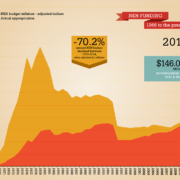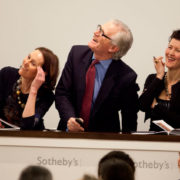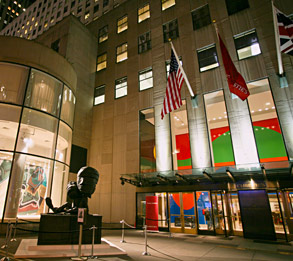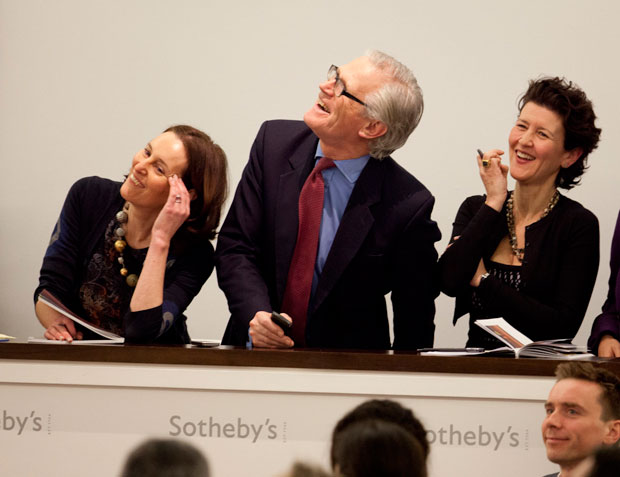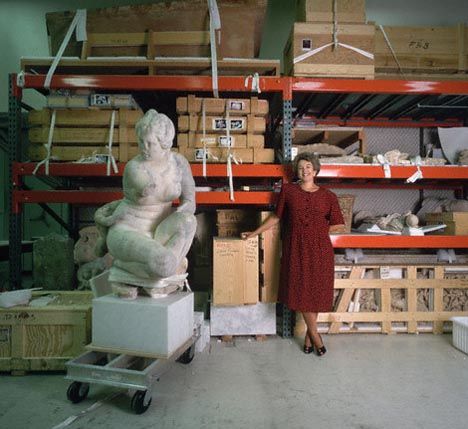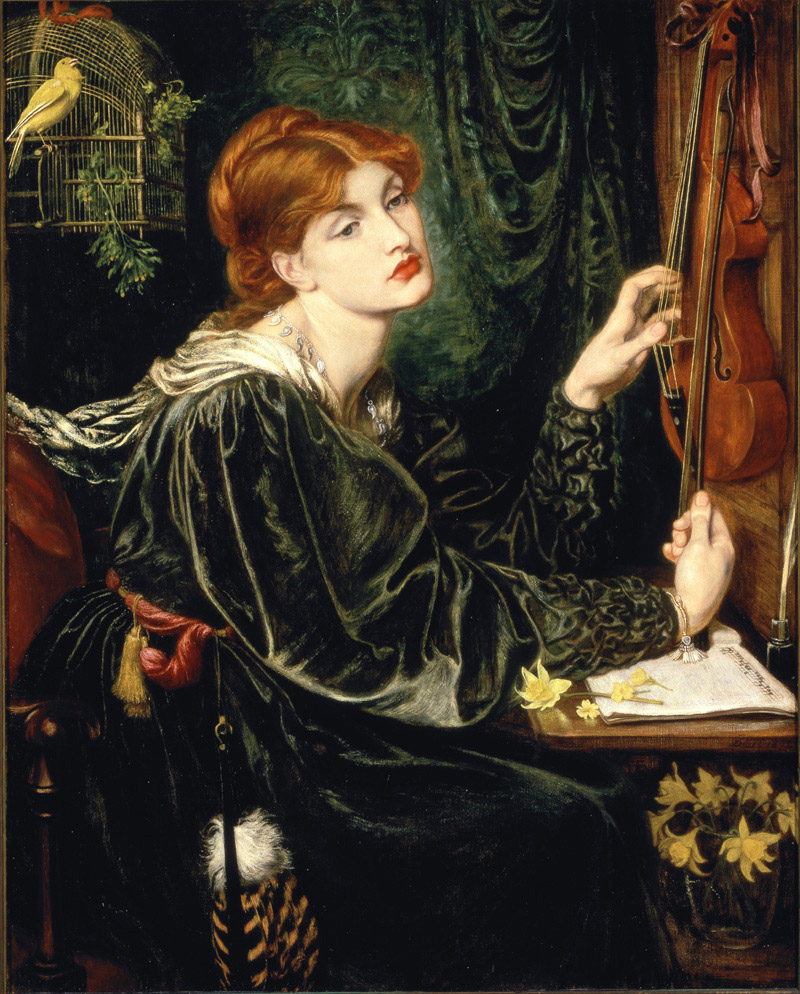Museum Budgets & an Anxious Arts Community: What does this say about the next 15 years?
Ruth Osborne
Last month, we received update on a historically significant painting by Pre-Raphaelite artist William Holman Hunt set to be sold at Christie’s to pay of a portion the Delaware Art Museum’s $30 million debt.
In the ensuing weeks, ArtWatch has picked up on an increasing degree of anxiety from art historians and journalists keeping abreast of the story as it unfolds. Even more unease has appeared in the arts world from updates on the status of the Corcoran Gallery’s demise, also from lack of funds.
From The Ruskin Society comes the following comment on the W.H. Hunt sale, to take place later this month:
“I am deeply concerned about the forthcoming sale of Isabella and the Pot of Basil.
It is my belief that museums and galleries should be the custodians of paintings and other items in their care. these things are not assets to dispose of at will, but important cultural capital.
Museums and galleries should have good management and be able to balance their books without having to sell ‘the family silver’ to pay off debts.
This particular Pre-Raphaelite painting Isabella and the Pot of Basil is a historic work of art, to be compared to its ‘sister’ in the Laing Art Gallery, Newcastle-upon-Tyne, UK.”
Dr Cynthia Gamble
Chairman
The Ruskin Society
From an updated estimated lot on behalf of Christie’s (that the Hunt painting could go for upwards of $13.4 mil.), Delaware journalist Margie Fishman has just hinted at the Delaware board’s possible selling strategy: parting with fewer but more valuable works is better than parting with more works at lower individual figures. Independent journalist Judith Dobrzynski has further suggested that the Hunt painting, alongside the possible sale of Winslow Homer’s Milking Time (1875), could be all that is required to take care of the $30 mil in need. But if this is to be Delaware’s strategy, will they not be risking parting with two of their most treasured works? Just how much will these unfortunate sales depreciate the overall value and integrity of the collection?
Museum professionals nationwide remain deeply concerned with what these sales imply for the future health of the Delaware Art Museum, stating their anxieties about current happenings and “misplaced” art works and loans in the past: “With their history of mismanagement, it wouldn’t surprise me if they were in this position 20 years from now.” (Richard J. Kelly, secretary of the national Museum Trustee Association).[1] Issues pertaining to museum funding, board management, and (inevitable?) deaccessions all lend themselves to a reconsideration of whether or not American collections are appropriately valued and supported by wider society.
Lee Rosenbaum’s coverage of the New York National Academy’s recurrent budget crisis relates yet one more story of serious museum staff restructuring in the face of lagging financial support. The Director’s recent statement insisted that this move was not due to budget cuts, but also referred to the staff as “streamlined” and confirmed it would help save the Academy funds “in the mid-six figures,” as they had been experiencing operating budget issues since 2008. No surprise there. The Academy undertook “stealth” deaccessions that fateful year to help with budget deficit, causing it to be ostracized from the AAMD and placed on probation.
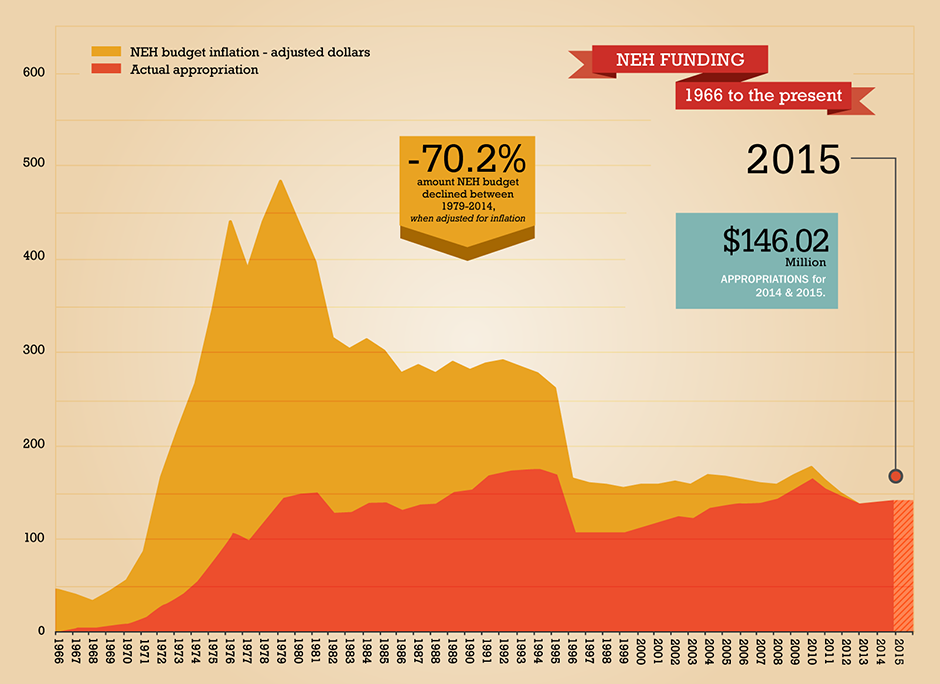
NEH Funding Chart. Courtesy: www.neh.gov
All institutions will make their own decisions, it seems, when a budget crisis places them between a rock and a hard place. What the past ten years has showed us is that these decisions are only increasing in this troubled financial environment. The startling proposal to slash the NEH budget in half for the upcoming fiscal year is just one more obvious sign that priorities towards the arts are slipping and responsibilities the government took up fifty years ago are falling through the cracks.
[1]Margie Fishman, “First painting auctioned by museum could bring $13.4 million,” The News Journal. 20 May 2014. http://www.delawareonline.com/story/news/local/2014/05/17/first-painting-auctioned-museum-bring-m/9233453/ (last accessed 22 May 2014).

